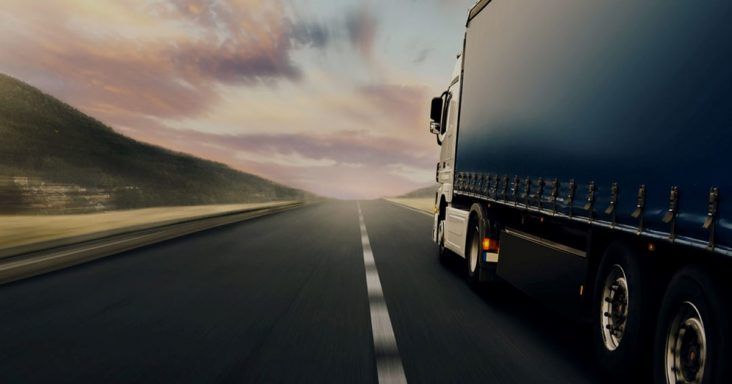Trucking economist: Recovery could be a Nike ‘swoosh,’ or a ‘W’
by July 9, 2020 5:48 pm 1,876 views

The U.S. economy possibly is already out of what might be “the sharpest and shortest recession in history,” but the recovery won’t be completed until the second half of 2021 and will look like a Nike “swoosh.” Or, depending on what happens with COVID-19 infection rates, we may be headed for a tougher W-shaped recovery.
Those were some of the observations by Bob Costello, American Trucking Associations chief economist, during a webinar Thursday (July 9) produced by the ATA’s magazine, Transport Topics.
Costello said the gross domestic product won’t be fully recovered to pre-COVID levels until the second half of 2021. While some areas will recover more quickly, the overall economy will experience neither a U-shaped nor V-shaped recovery where the quick fall is followed by a quick rise. The economy instead will look like the Nike “swoosh” where the fast fall is followed by a long recovery.
The worst-case scenario is a W-shaped recovery where the sharp drop we’ve already experienced is followed by a partial climb and another drop before the recovery finally occurs.
Costello said early indicators have shown “how fast the economy is snapping back.” Freight volume has improved. However, some of the latest news is worrisome.
Costello said rising infection rates are the biggest threat to the recovery. With the exception of big box retailers, consumer foot traffic has been declining after recovering somewhat after the economy reopened. Many people are concerned about being in groups.
“This didn’t start off as an economic crisis,” he said. “This began as a health crisis that morphed into an economic crisis. And until you get a health solution, whatever that may look like, I think we can’t get all the way back to where we were prior to the pandemic.”
The trucking sector did better than it might have because the hardest hit sectors were service-oriented, like travel and entertainment.
“Normally it’s the goods side of the economy that is hit very hard,” he said. “This time it was services because we didn’t want to go out in groups.”
Costello said he’s been surprised at the lack of trucking bankruptcies, which he had expected to increase before the pandemic occurred. The Paycheck Protection Program passed by federal lawmakers provided about $4 billion to nearly 11,000 trucking companies. That money paid for labor costs for two months and helped keep a lot of carriers in business. But with that money running out and freight volumes still not recovered, he expects more business failures to occur.
Costello said trucking fleets will need to be nimble as the recovery starts and stops. Differences will exist among regions and industry sectors. Sales of big rig Class 8 trucks are expected to fall 50% compared to last year and are well below replacement rates. Carriers will need more volume and better margins before they purchase trucks.
Costello said the recession started in February before the worst of the pandemic began hitting the United States. March and April saw the loss of 22 million jobs, an historic loss. Retail sales dropped 23%, and factory output fell more than 17%. A record number of Americans filed for unemployment insurance. The previous week’s 1.3 million new jobless claims would have been an all-time high were it not for the staggering numbers seen earlier in the pandemic.
The good news was that those two very bad months were followed by much better months in May and June, when 7.5 million jobs were added, which was also historic.
After gross domestic product rose 2.3% last year and 2.9% the year before that, he expects it to fall 6.2% this year, mostly in the first half. He expects that it fell 35% on an annual basis during the second quarter and then could increase 15-20% in the third quarter if the pandemic is under control.
Costello said the ATA collects data on millions of loads monthly, and the trucking industry saw huge variations in the way it has been affected, depending on what part of the supply chain carriers occupy and what part of the country they serve. Refrigerated grocery haulers have done better than refrigerated restaurant haulers, as restaurant sales have fallen more than 50%, while grocery sales rose more than 25%.
Online sales have been a fast-growing sector, with year-to-date sales up 17% while all other retail sales are down almost 8%. In May, online sales were up 31% year-over-year, while all other sales were down 11.5%.
The long-term trend toward online sales has affected how the trucking industry operates. In 2000, the average length of haul in the dryvan sector was 800 miles. Last year, it was 505 miles as warehouses increasingly dot the landscape. The pandemic will solidify that trend.
One positive change for carriers has been a temporary pause in the driver shortage. Before the pandemic, the industry was short 62,000 drivers. With May truck tonnage down 9.6% year over year, the industry doesn’t need as many of them.
However, the fundamentals that were causing the shortage haven’t changed. It’s still a profession with an aging, mostly male workforce with demanding hours away from home. Moreover, he expects to see drivers exit the industry, and it’s hard to train new ones in a pandemic.
“That driver shortage will come back with a vengeance when the industry’s doing better and when the economy is doing better,” he said.
